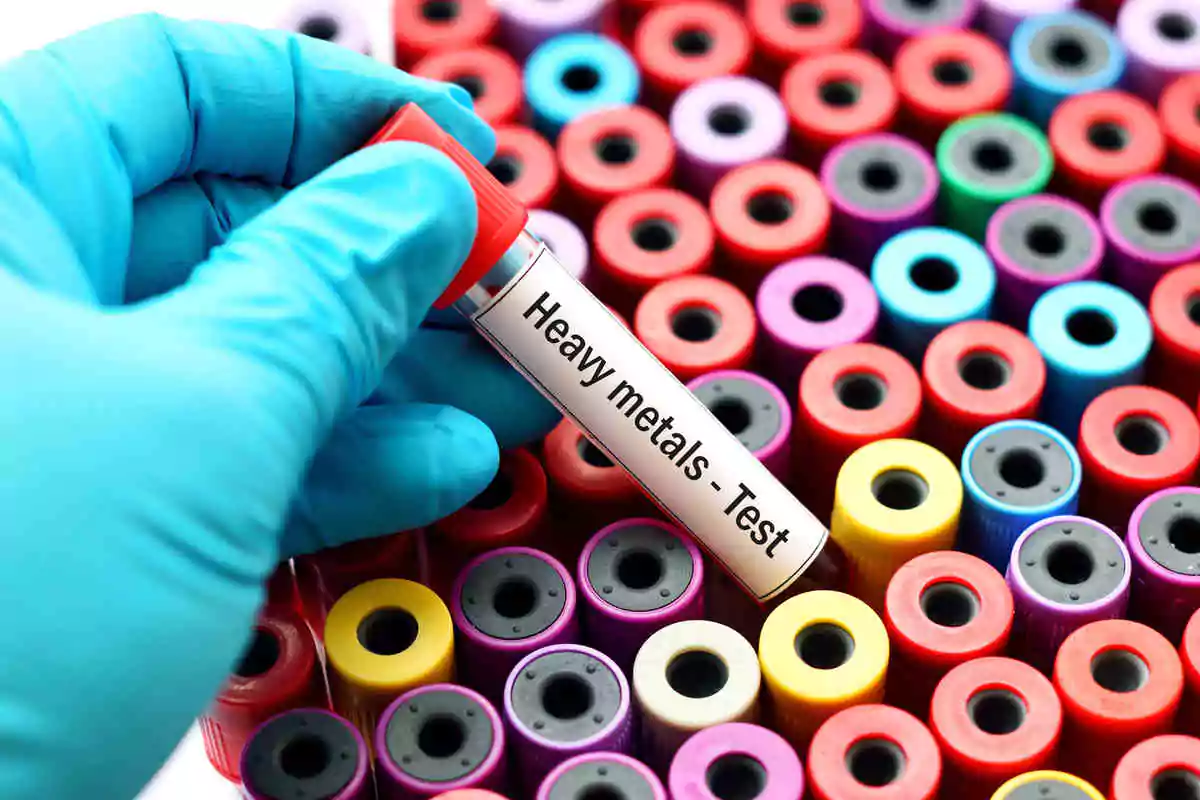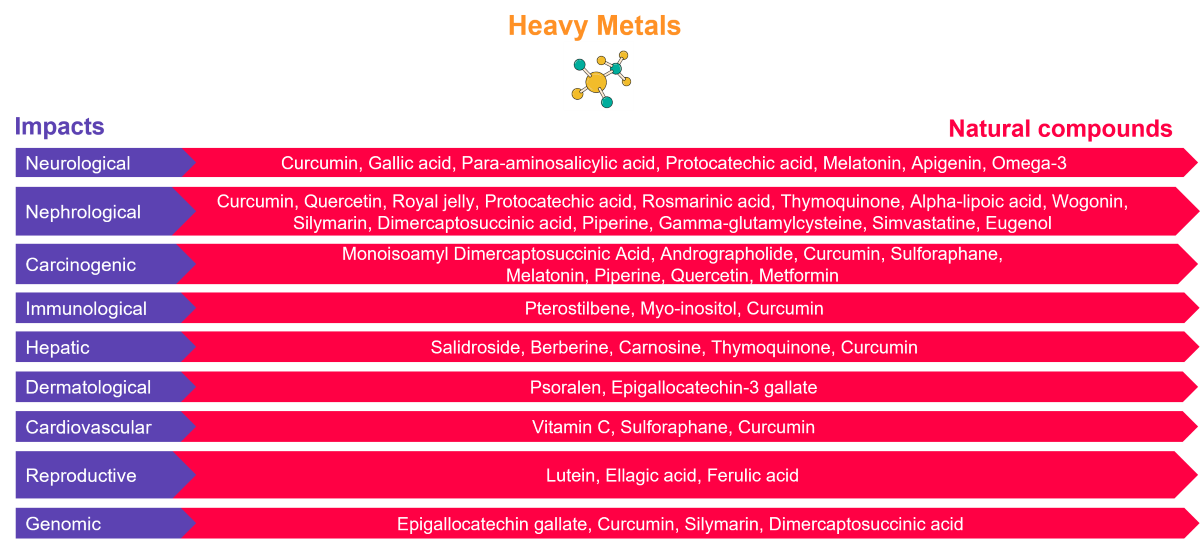Healthcare
Environmental exposure: the concept of exposome, its applications and public health issues
The concept of exposome has grown to a public health challenge. But what is it exactly and what are its applications?

Health issues are a growing concern and the impact of diet on our health and the development of chronic diseases has been proven. In 2014, Santé Publique France launched the ESTEBAN public health study, aimed at studying the environment, physical activity, nutrition and the prevalence of certain chronic diseases. This is repeated every seven years to monitor changes. In 2021, the results of ESTEBAN on heavy metal exposure have been published. The conclusion of this study is worrying: the entire French population, adults and children, was exposed. In this article, Alcimed reviews the health impact induced by heavy metals and the solutions to reduce it.
Heavy metals can refer to cadmium, copper, mercury, nickel, chromium or arsenic. In the beginning, they are naturally present in our environment in small quantities, and can be essential to life (zinc, copper…). However, human activity has considerably increased their presence in our environment.
At higher doses, these metals become a risk and the consequences on our health are not negligible, especially since they have the ability to accumulate in the human body and that their natural elimination is particularly difficult. When exposure exceeds safety thresholds, the symptoms can be many, with different levels of possible damage to the following mechanisms
The sources of exposure to these heavy metals are varied: the atmosphere, tobacco, medical implants, fillings… but especially in food.
Indeed, heavy metals are emitted into the atmosphere in the form of particles by discharges from activities (industries, transport, households) or by certain agricultural practices. These particles fall on vegetation and soil, which will lead to water pollution (water can be loaded with heavy metals and move to the water table) and a transfer in food. For example, cereals and vegetables are the main sources of cadmium, nickel and mercury pollutants, while water and beverages are mostly responsible for lead exposure. Consumption of seafood also has a strong responsibility on the bioaccumulation levels of arsenic, cadmium and mercury.
As an example, a recent American study highlighted the excessive levels of heavy metals in dark chocolate bars. This is due to the cocoa content – the beans can be contaminated by the soil but also after harvesting by airborne pollution. Another cause for concern is the high cadmium content of children’s breakfast cereals.
Mechanisms are being studied and implemented to clean up water and soil directly at the source. As the degradation of heavy metals is particularly complicated, the solutions will focus on transforming them into less toxic forms.
Today, soil remediation is achieved through phytoremediation, a mechanism that relies on the ability of certain plants, algae or fungi :
Phytoextraction continues to be explored as a means of soil and water remediation. Claude Grison, a French chemist, was recently awarded the European Inventor 2022 prize for developing a phytoextraction method based on the ability of metallophytes, plant species that are resistant to metallic elements, to extract and store these metals. The processes developed also make it possible to re-exploit the heavy metals absorbed by the plants, by producing molecules that are very useful for industry (cosmetics, health, etc.).
Various studies are currently investigatin the depollution of the human body, but the existing solutions are still few. Chelation is one potential option. Heavy metals are widely distributed in the body and settle in the tissues. During chelation, the heavy metals are extracted from the tissues and then eliminated. Indeed, the term chelation designates a process during which a molecule called “chelator” will bind to a metal atom and thus trap it. The chelating molecule-metal atom complex, which is stable and inactive, can then be eliminated from the body through the urine. Chelation can be chemical or natural.
Medically, chelation therapy can be used in the case of acute intoxication with heavy metals or radioactive elements. This is a powerful medical treatment, during which artificial chelators such as DSMA and EDTA are injected.
There are some issues associated with these treatments, including the fact that the artificial chelator will not target only excess metals and may result in a deficit of micronutrients, such as zinc, which will also be removed.
There are also natural chelating agents. Among the best known, chlorella traps heavy metals, such as mercury and lead, in its membrane and eliminates them. Other algae have the same properties, such as Dulse. Some foods can also help detoxify the body, such as strawberries with their insoluble fibers that trap mercury, cilantro, highly antioxidant components and foods (green vegetables, carotenoids, curcumin, vitamin C, fruit pectins…) and foods rich in sulfur (garlic, onions, broccoli…).
During chelation, it is possible that side effects occur at first, such as headaches or nausea. It is also necessary to have ingested minerals in large quantities before starting chelation, as chelators are not very dedicated and can also bind to minerals like calcium.
Another avenue of exploration concerns natural bioactive molecules, which could counteract the toxic effects induced by heavy metals. The diagram below presents the natural compounds that can act on the functions likely to be impacted by heavy metal pollution.

Chronic diseases are one of the most important causes of mortality in the world. However, the duality of increasing micronutrient deficiencies and heavy metal pollution may accentuate the impact on the development of these diseases. Thus, the subject of heavy metal exposure, because of its repercussions and its generalization (across regions, but also across biodiversity) is becoming more important and it is essential to address their health risk. Public authorities should determine safety thresholds not to be exceeded, and scientists should continue to investigate potential solutions to this modern pollution. At Alcimed, we study these health problems and the ways to answer them everyday. We can accompany you in your projects, so do not hesitate to contact our team!
About the author,
Elise, Consultant in the Life Sciences team of Alcimed in France
Do you have an exploration project?
Our explorers are ready to discuss it with you